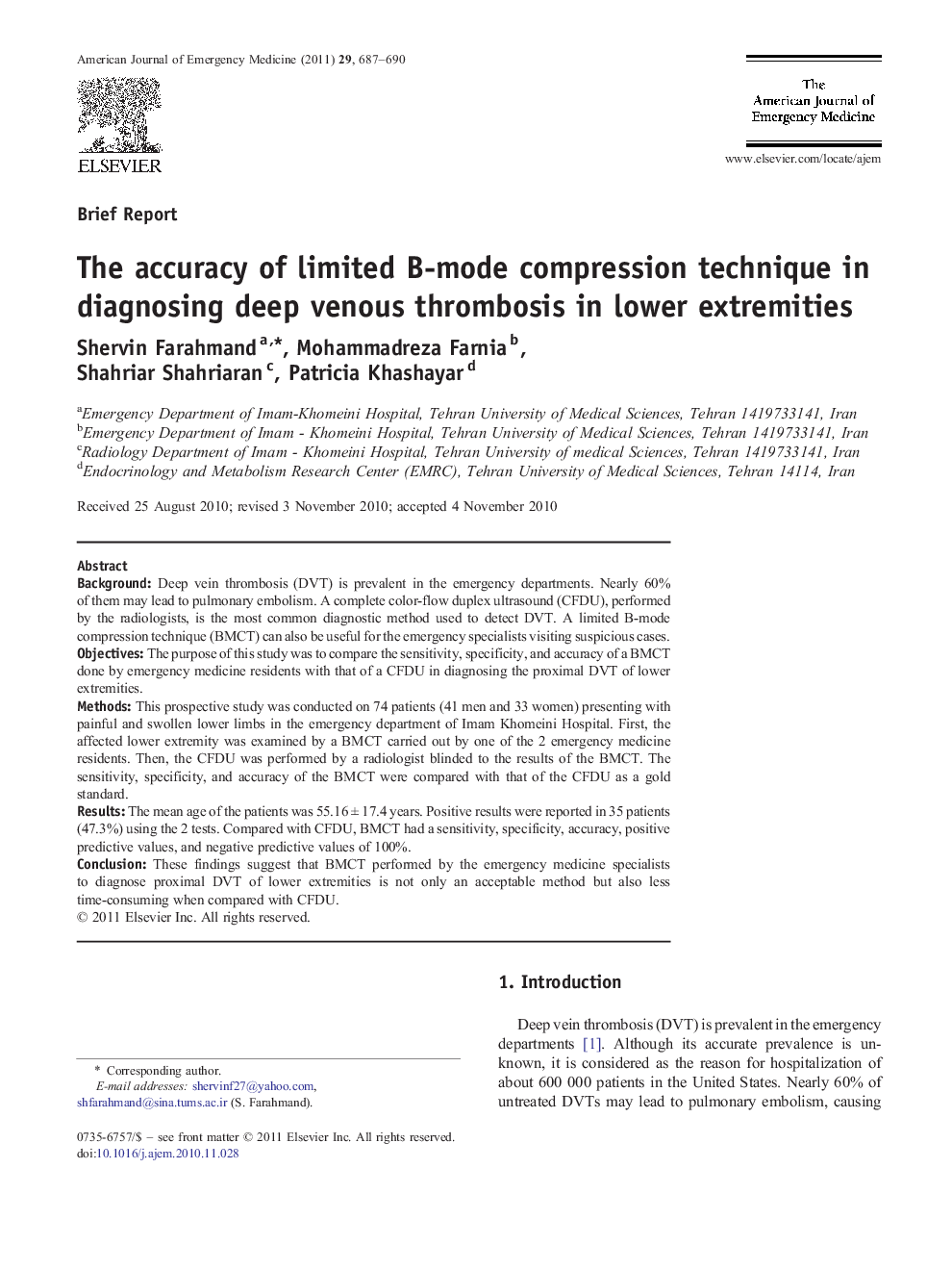| Article ID | Journal | Published Year | Pages | File Type |
|---|---|---|---|---|
| 3225402 | The American Journal of Emergency Medicine | 2011 | 4 Pages |
BackgroundDeep vein thrombosis (DVT) is prevalent in the emergency departments. Nearly 60% of them may lead to pulmonary embolism. A complete color-flow duplex ultrasound (CFDU), performed by the radiologists, is the most common diagnostic method used to detect DVT. A limited B-mode compression technique (BMCT) can also be useful for the emergency specialists visiting suspicious cases.ObjectivesThe purpose of this study was to compare the sensitivity, specificity, and accuracy of a BMCT done by emergency medicine residents with that of a CFDU in diagnosing the proximal DVT of lower extremities.MethodsThis prospective study was conducted on 74 patients (41 men and 33 women) presenting with painful and swollen lower limbs in the emergency department of Imam Khomeini Hospital. First, the affected lower extremity was examined by a BMCT carried out by one of the 2 emergency medicine residents. Then, the CFDU was performed by a radiologist blinded to the results of the BMCT. The sensitivity, specificity, and accuracy of the BMCT were compared with that of the CFDU as a gold standard.ResultsThe mean age of the patients was 55.16 ± 17.4 years. Positive results were reported in 35 patients (47.3%) using the 2 tests. Compared with CFDU, BMCT had a sensitivity, specificity, accuracy, positive predictive values, and negative predictive values of 100%.ConclusionThese findings suggest that BMCT performed by the emergency medicine specialists to diagnose proximal DVT of lower extremities is not only an acceptable method but also less time-consuming when compared with CFDU.
